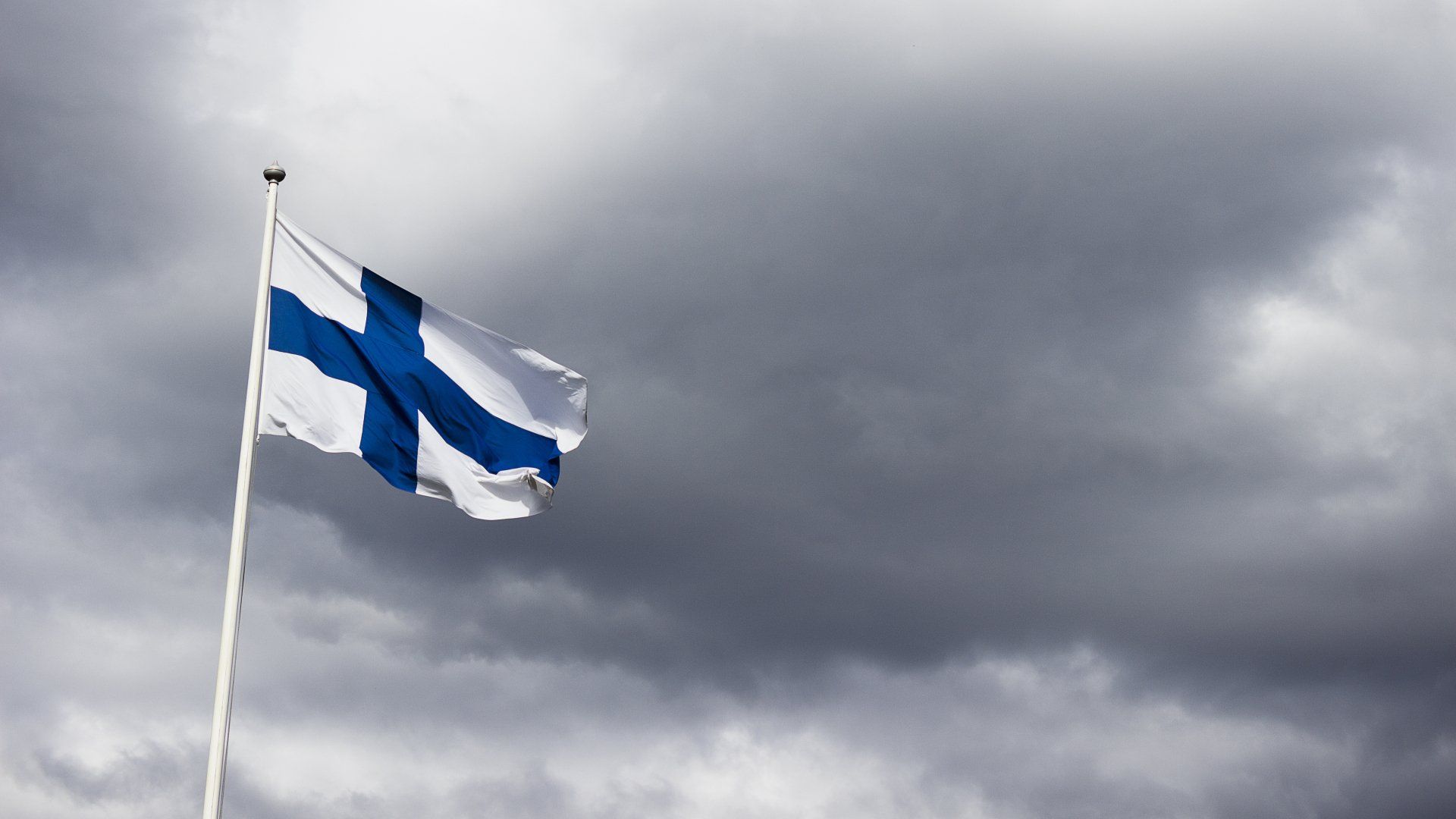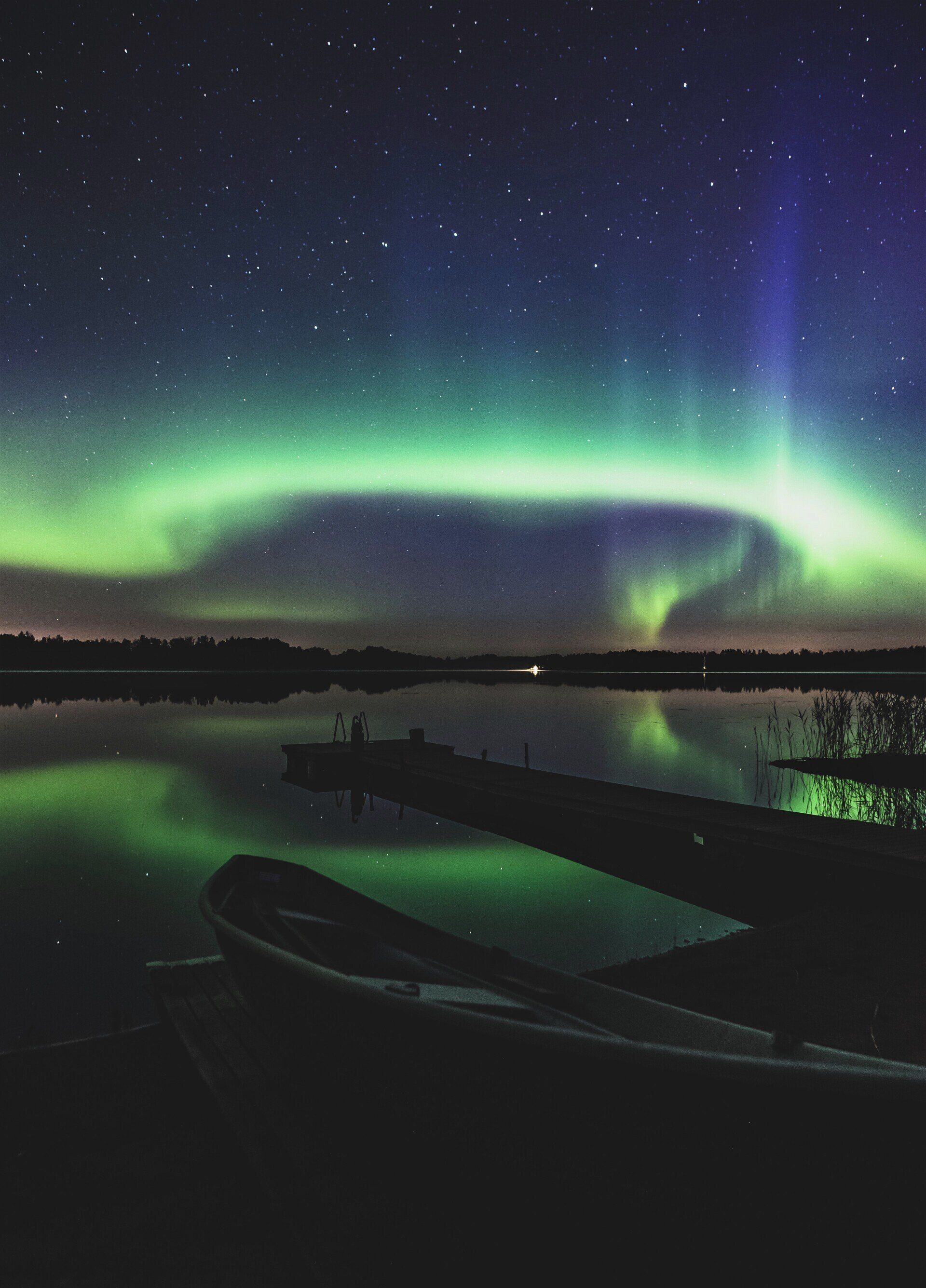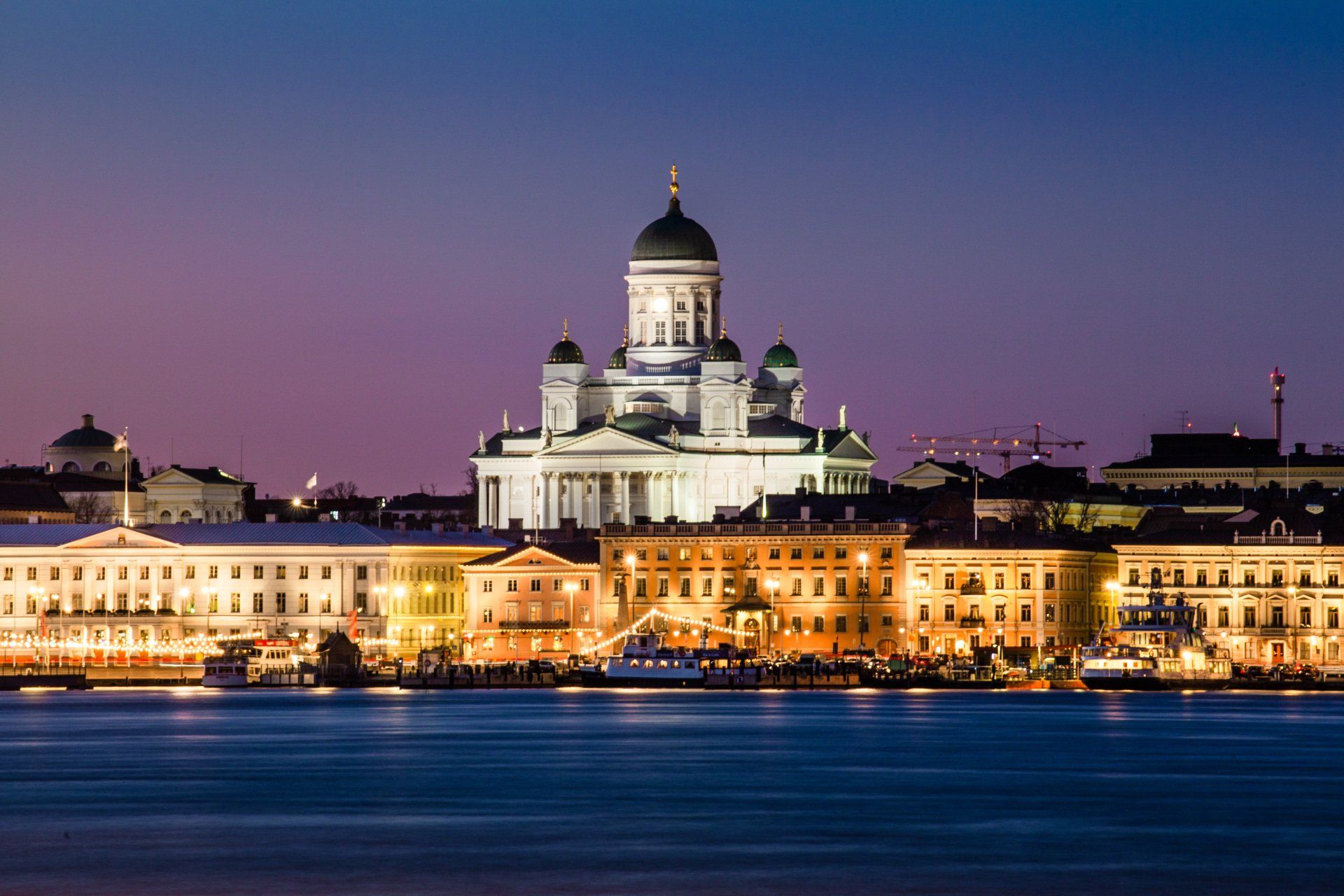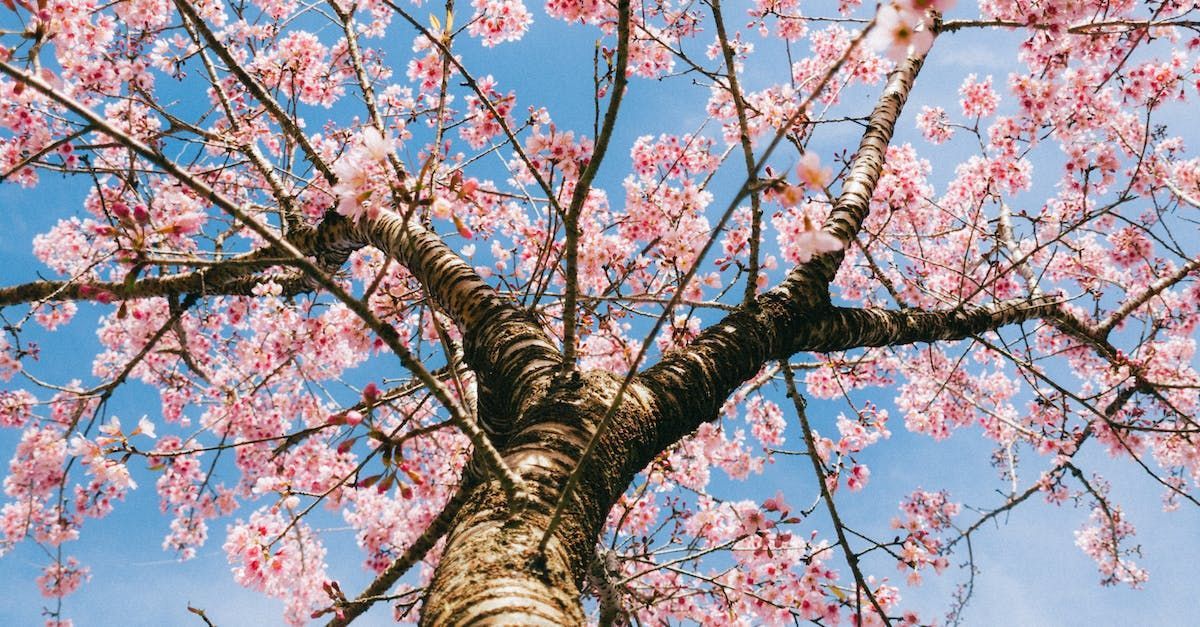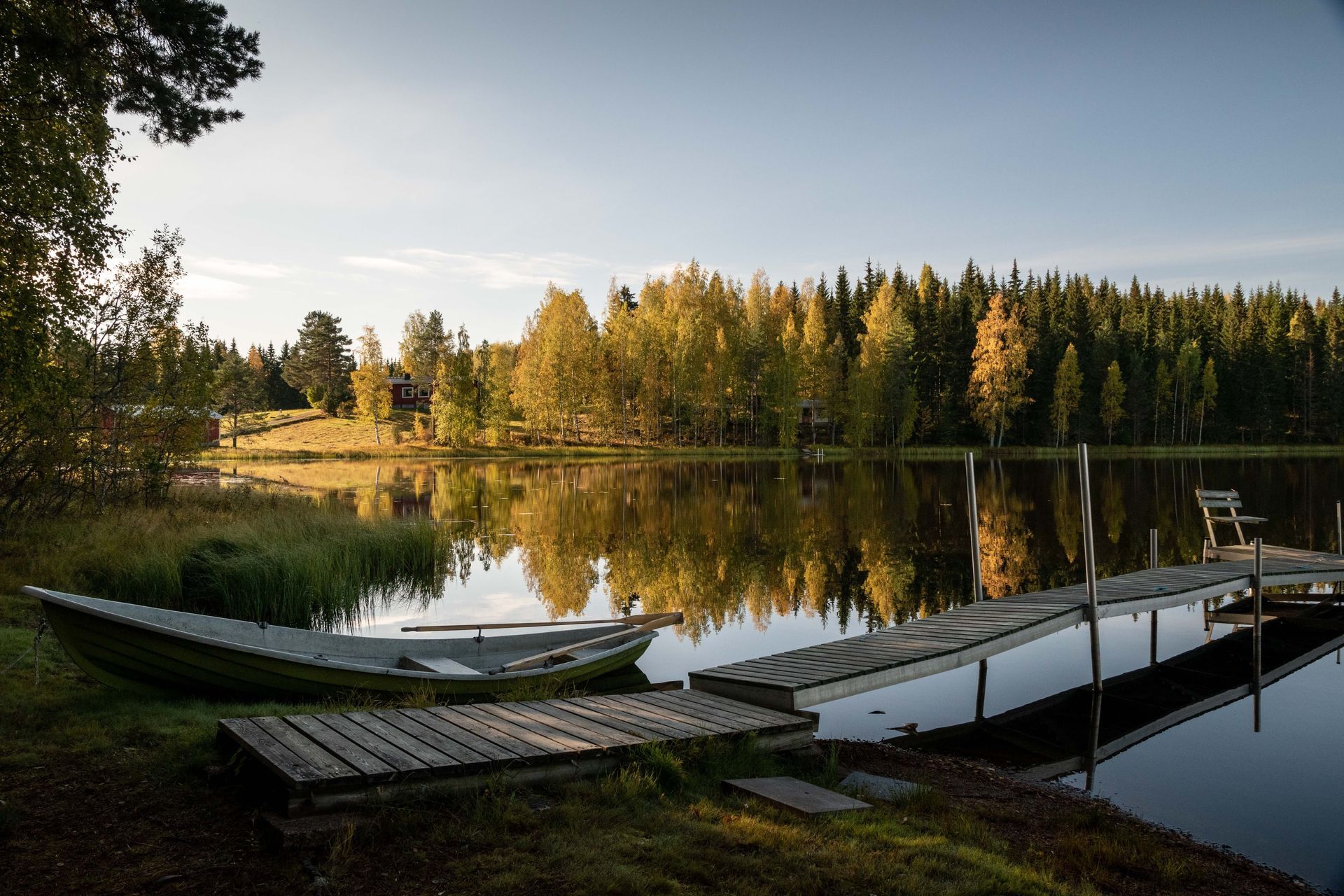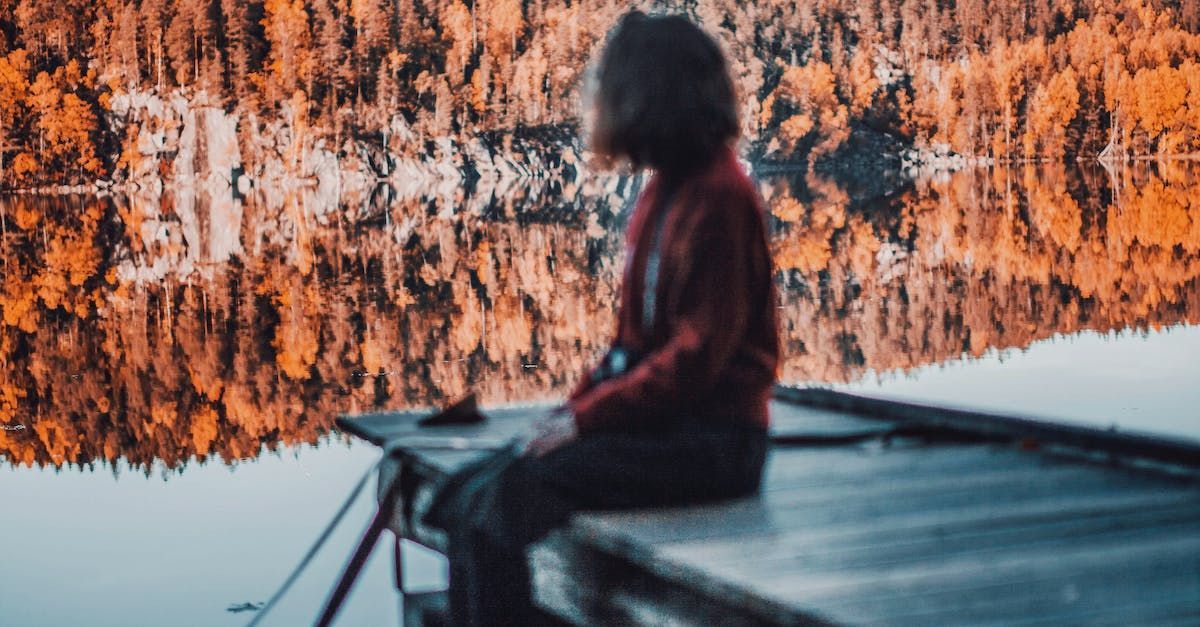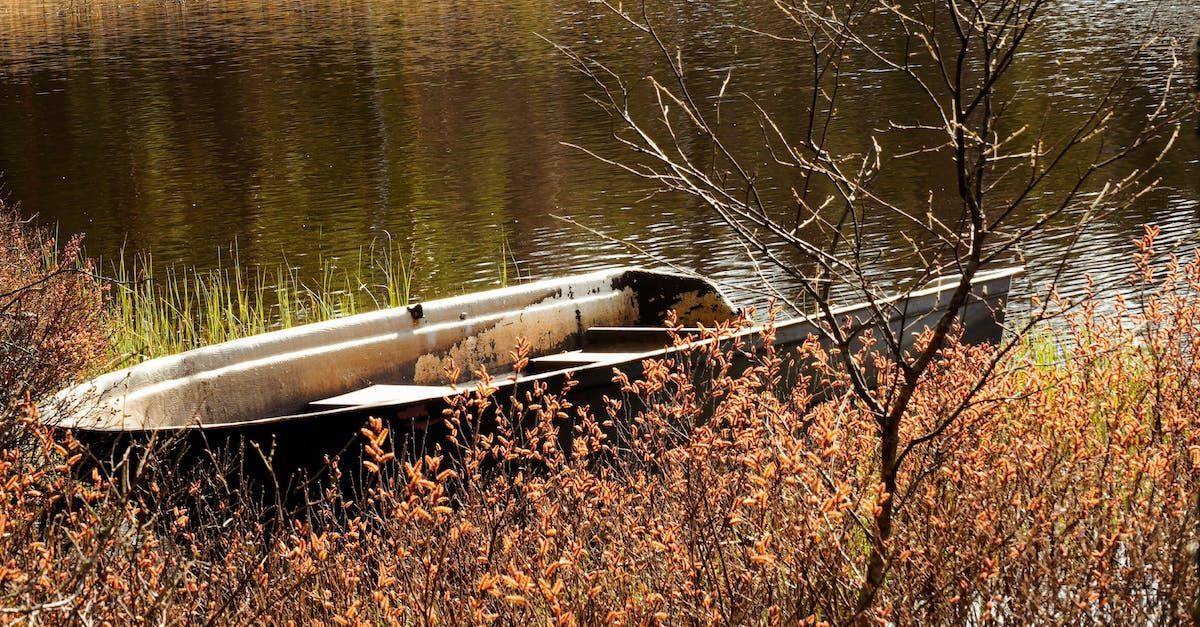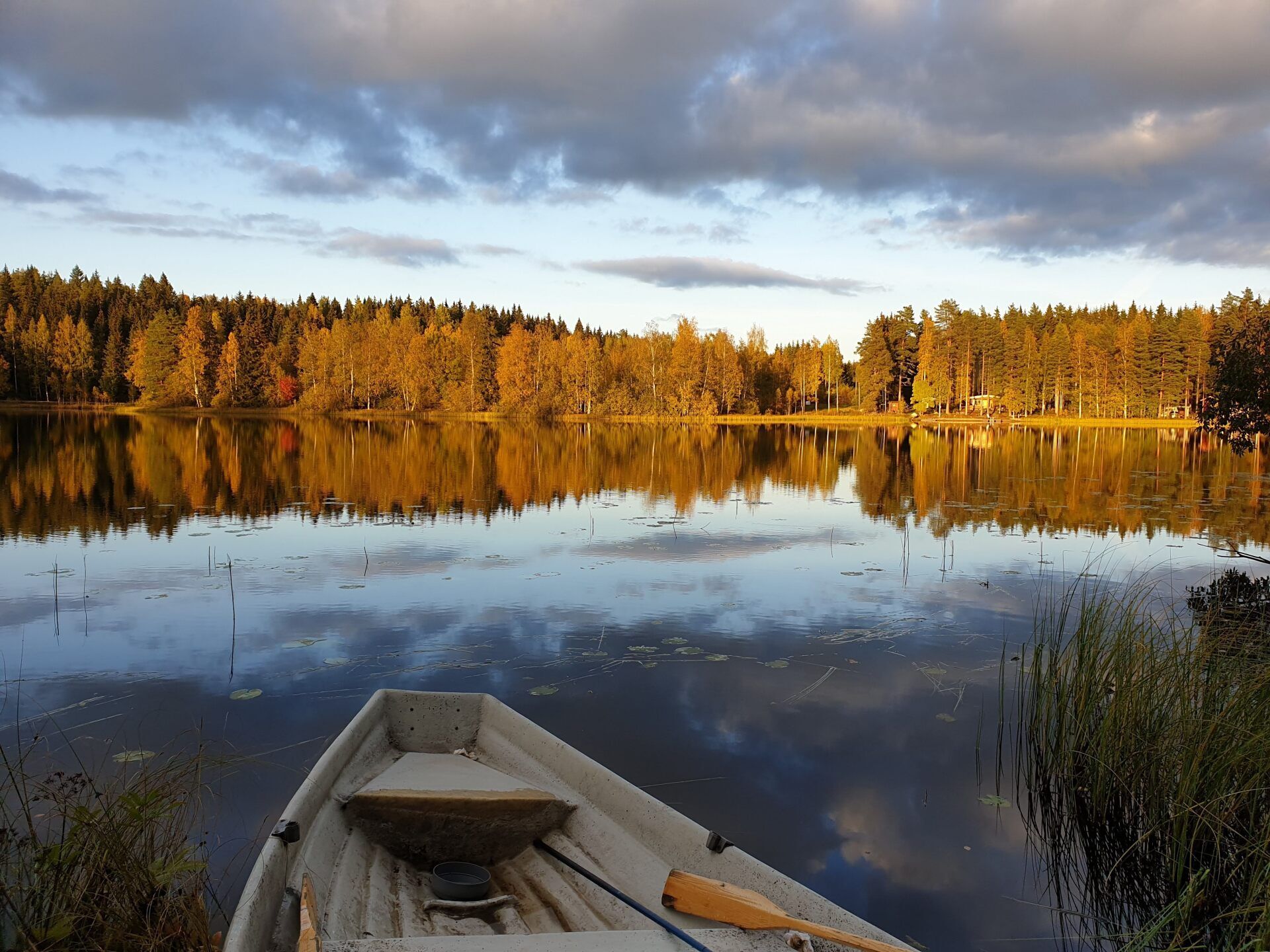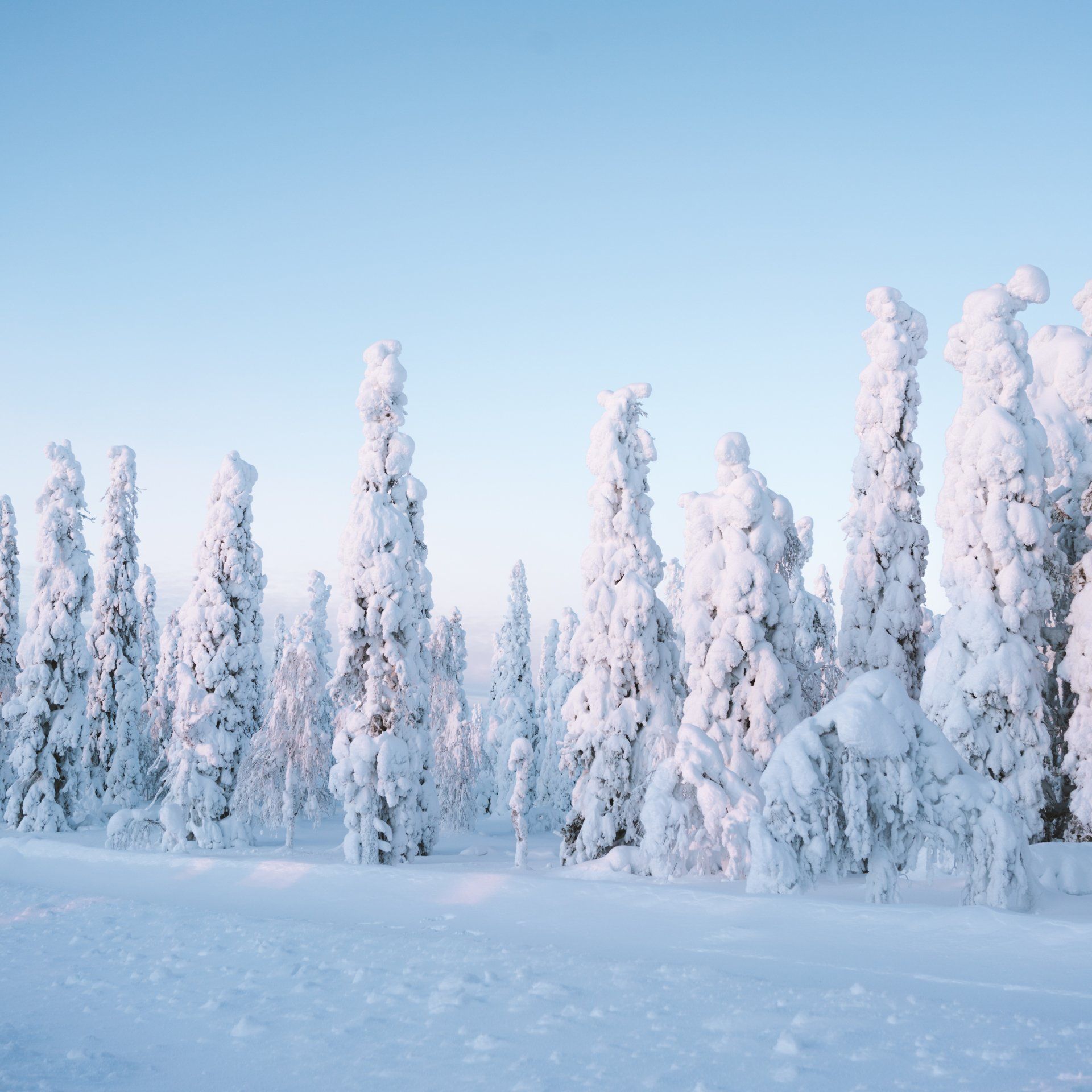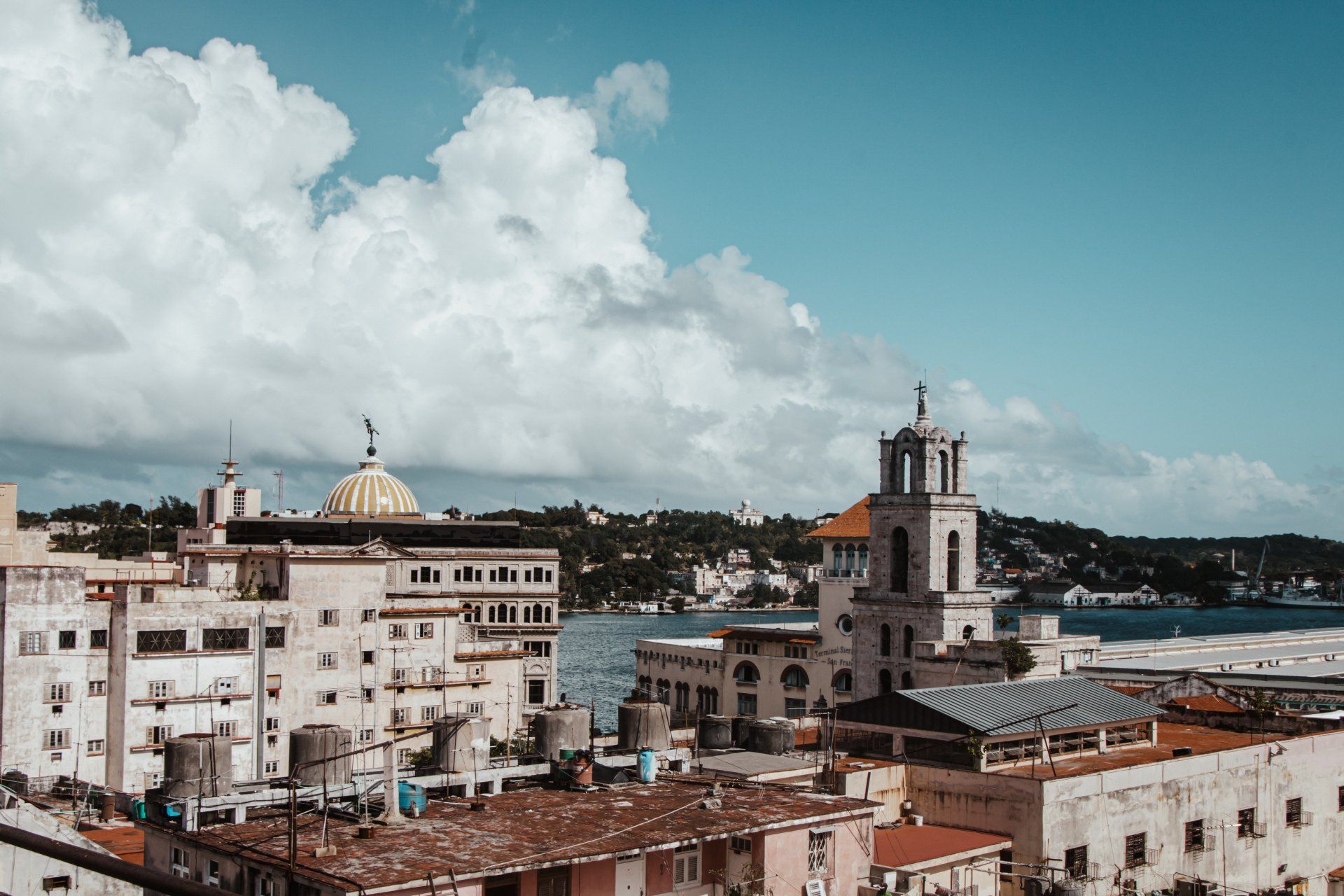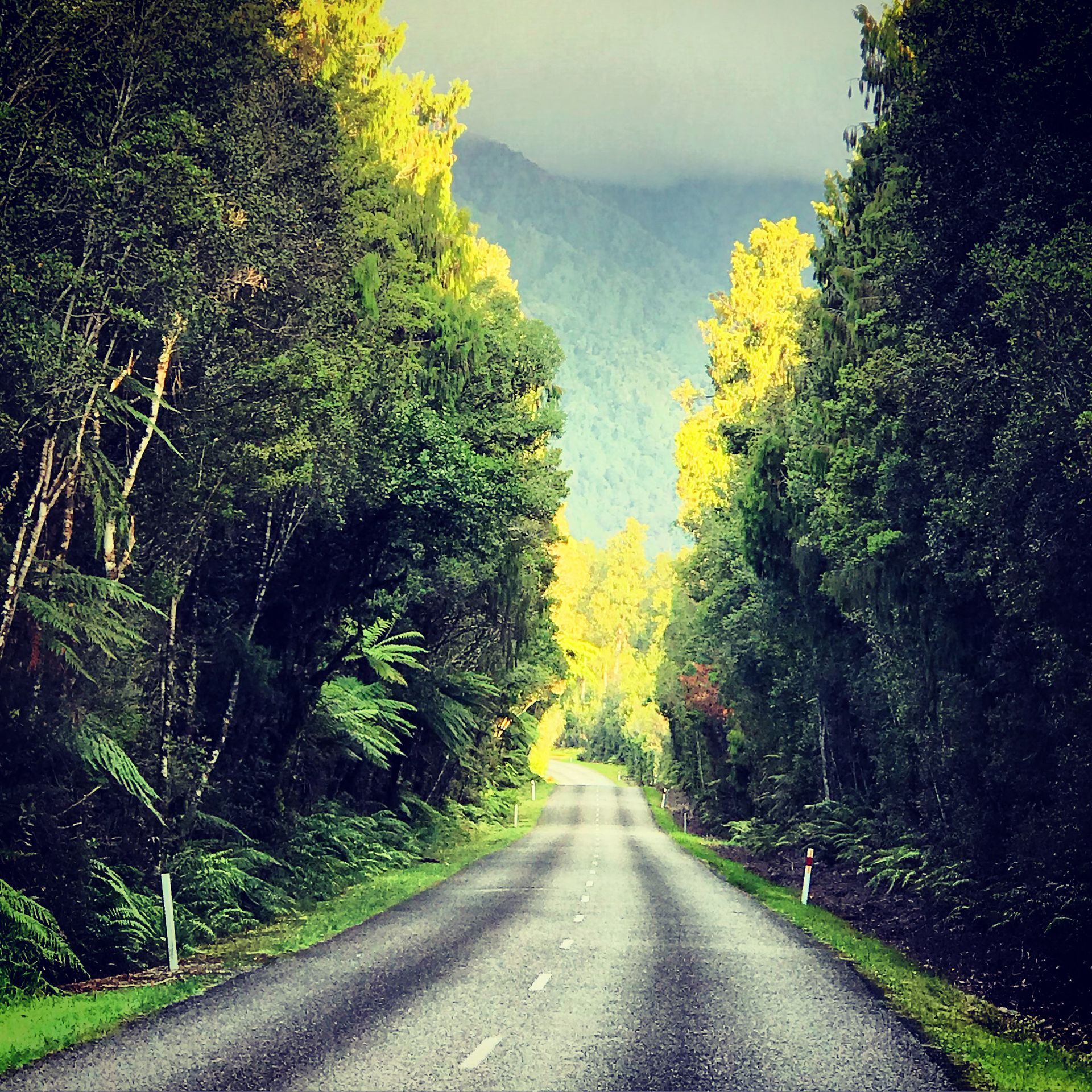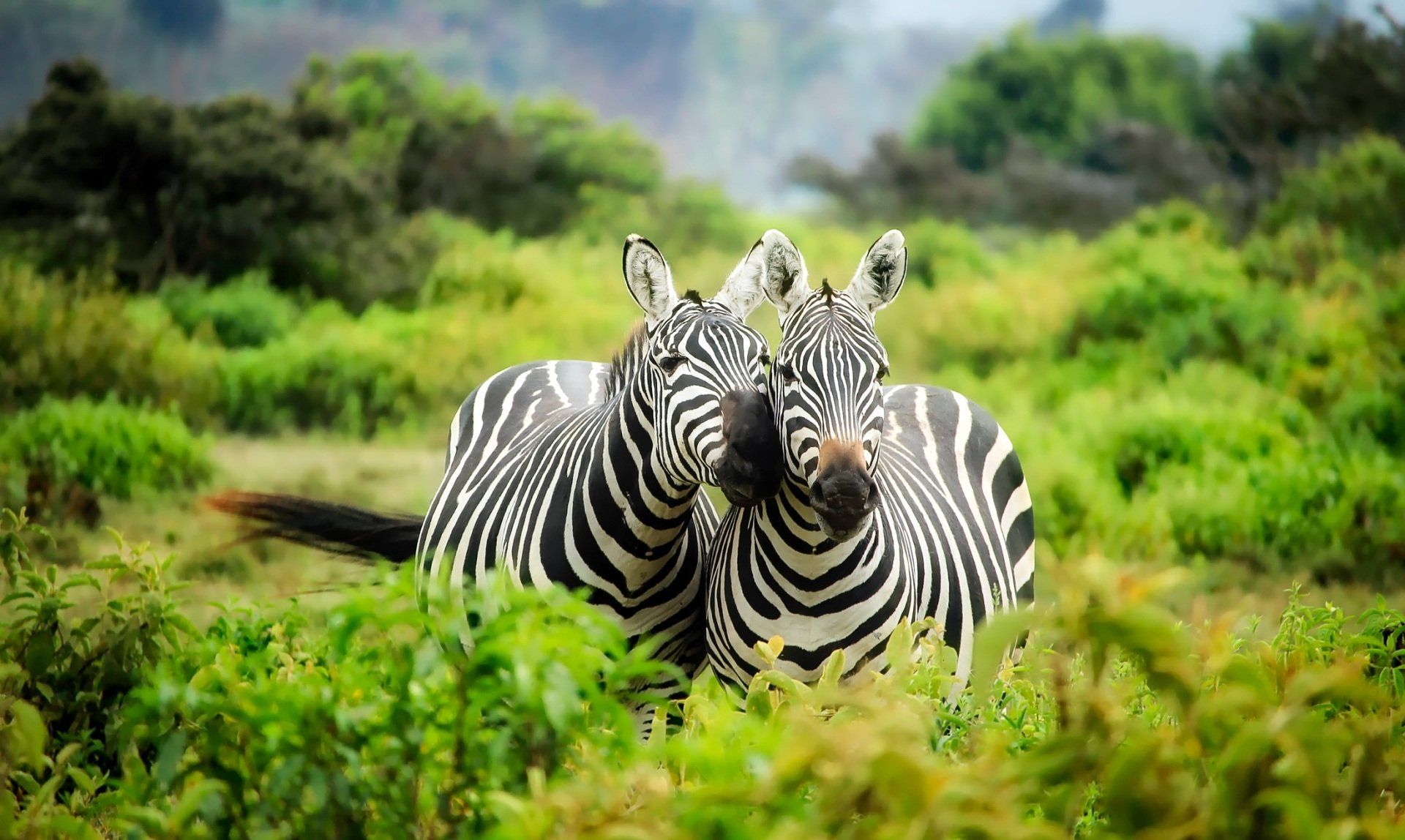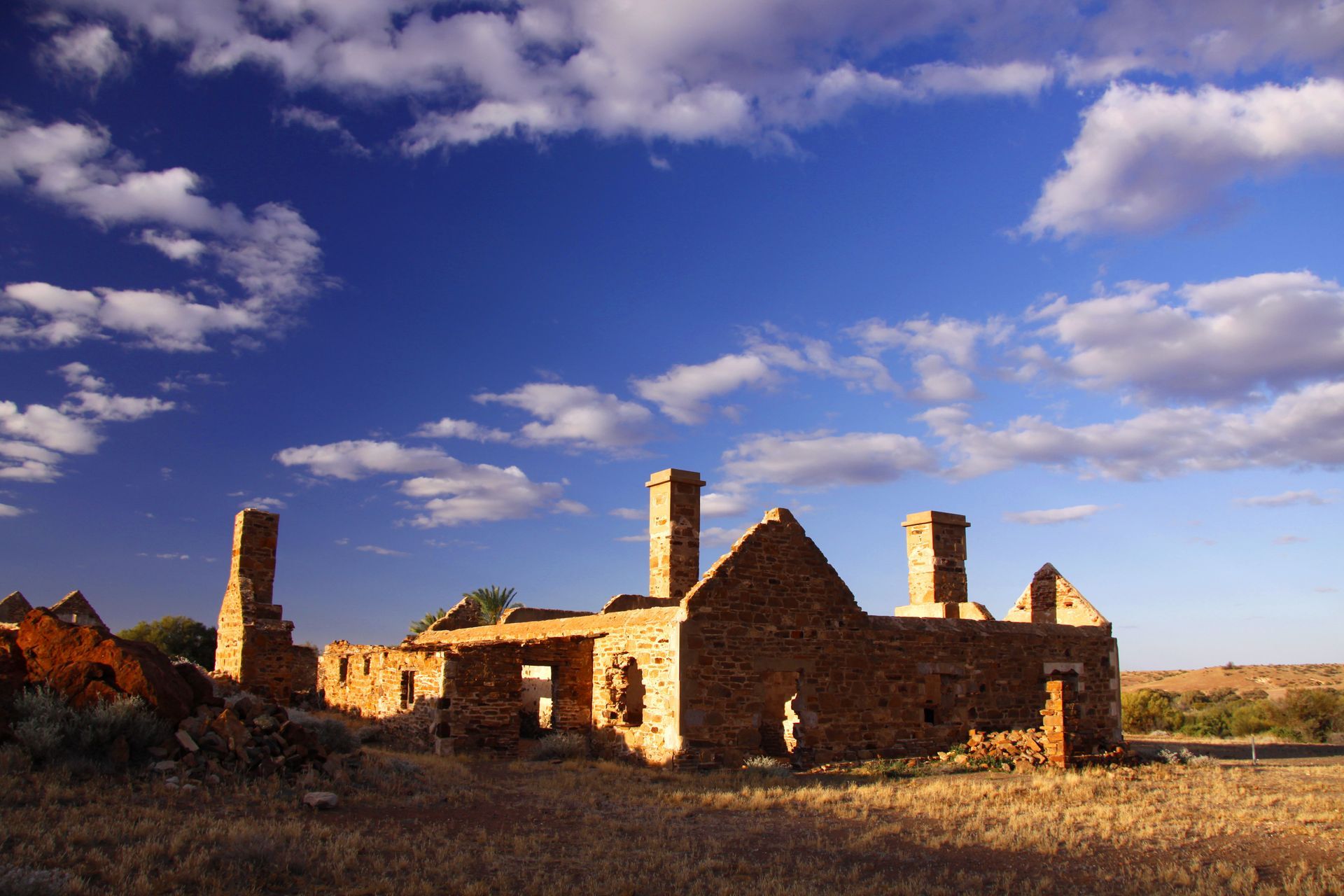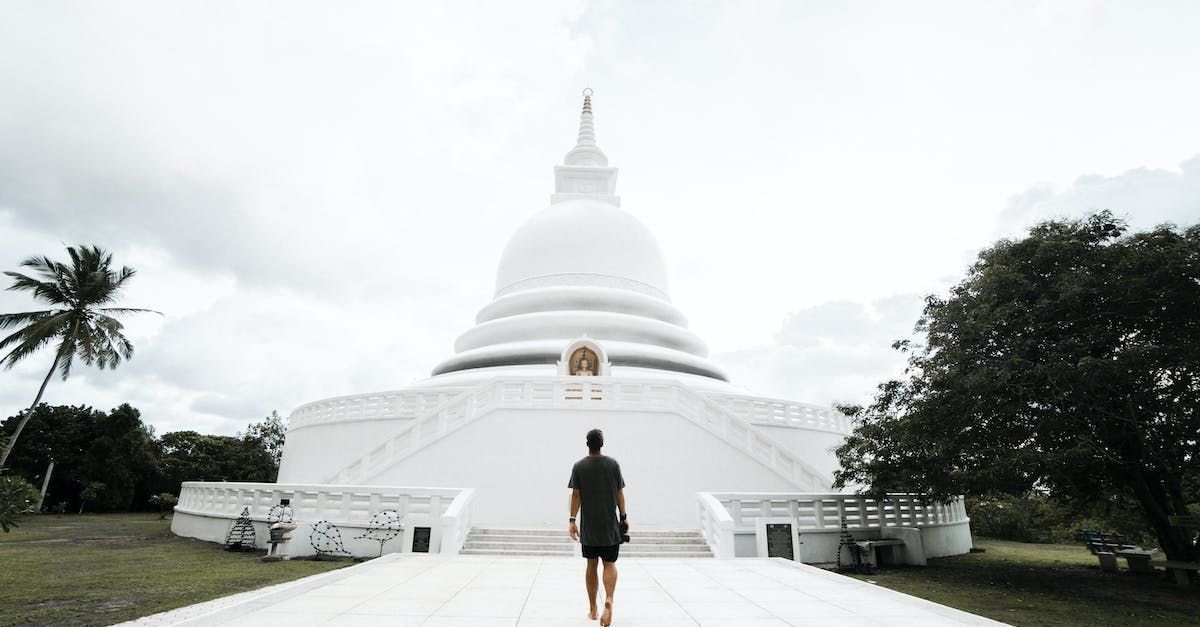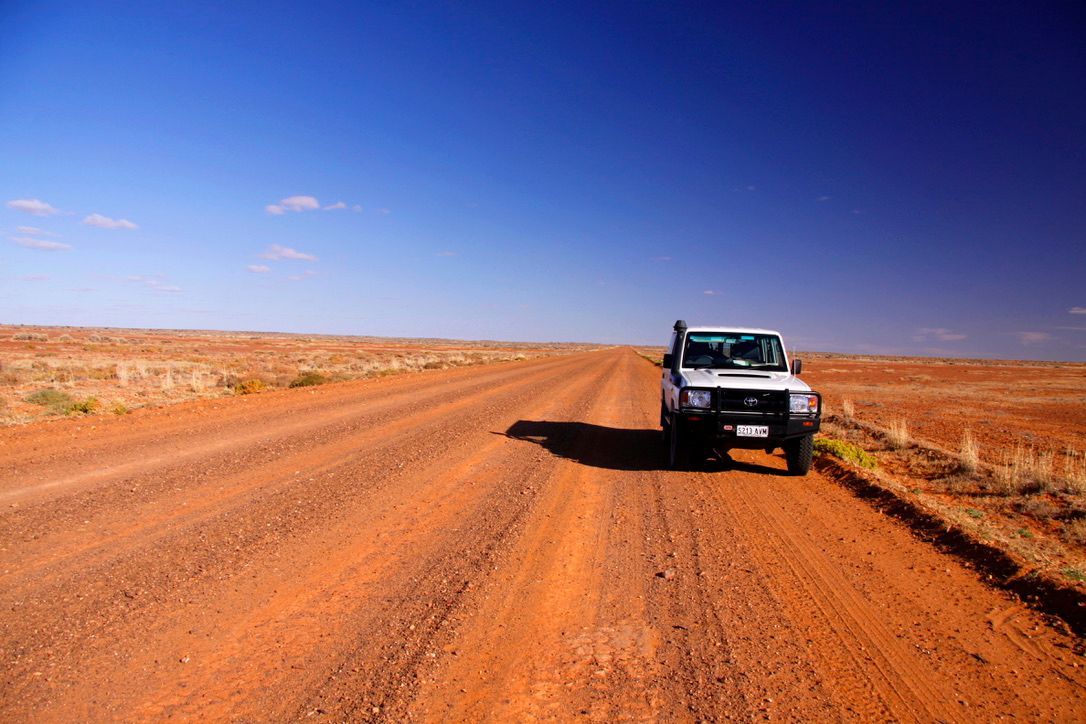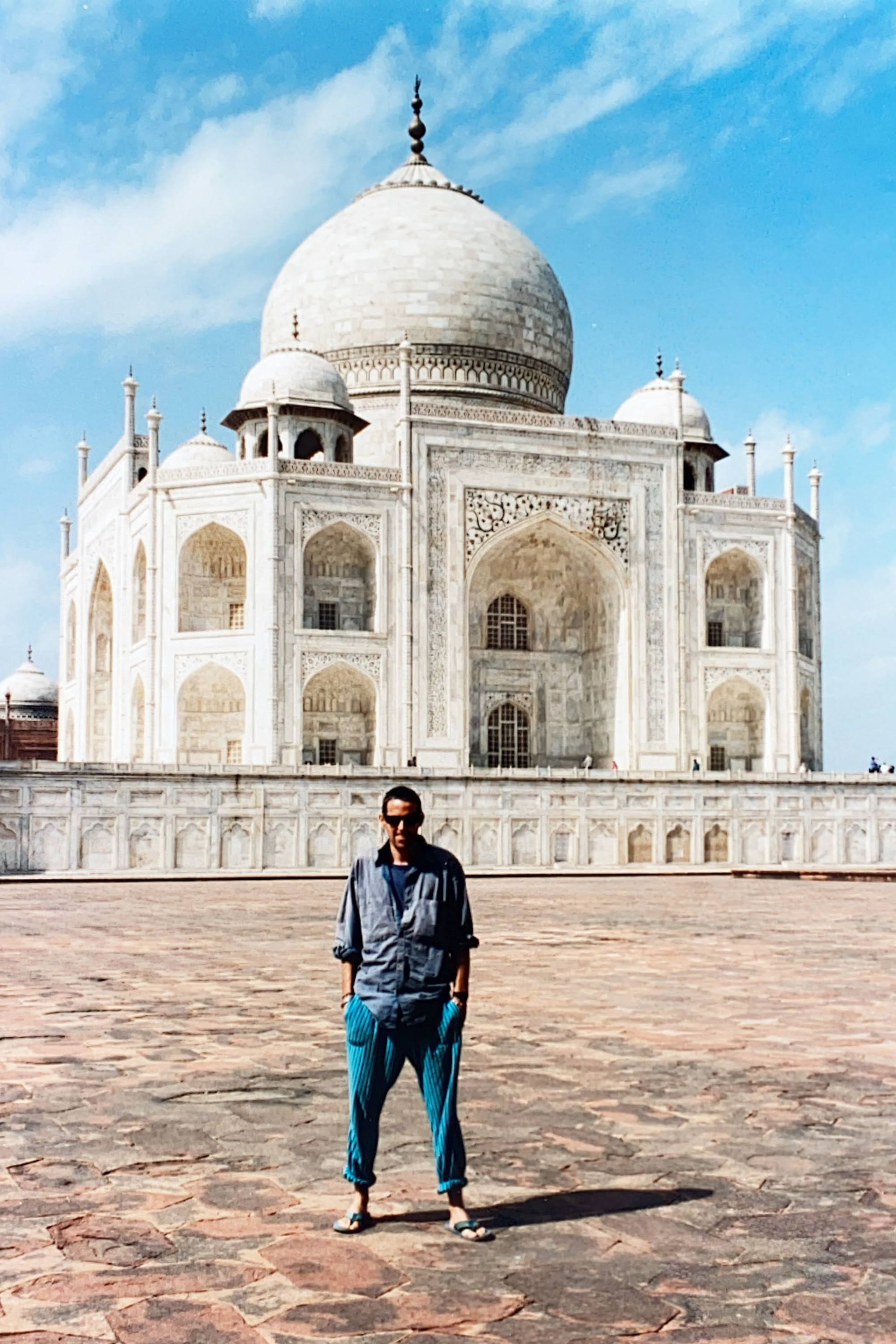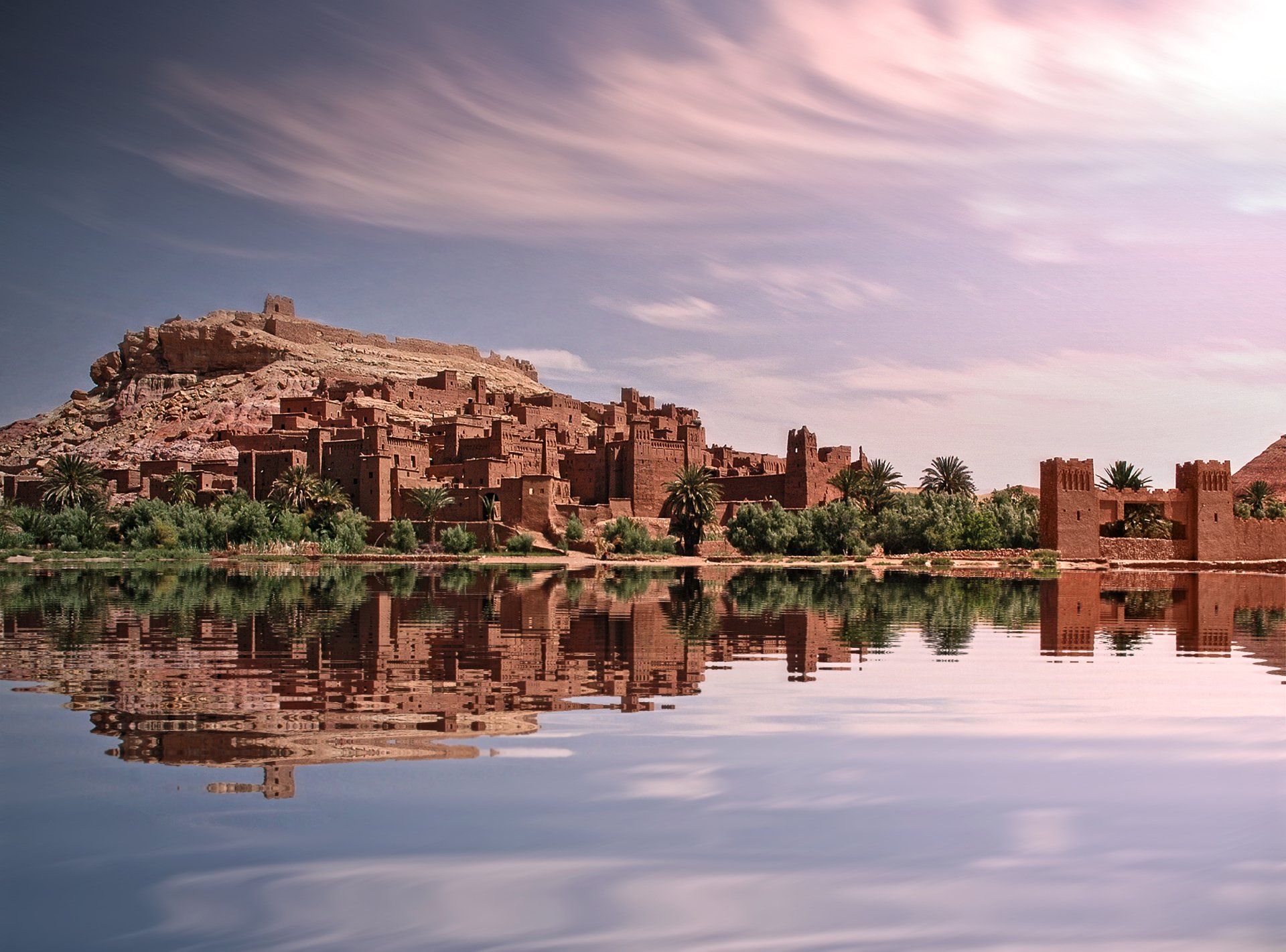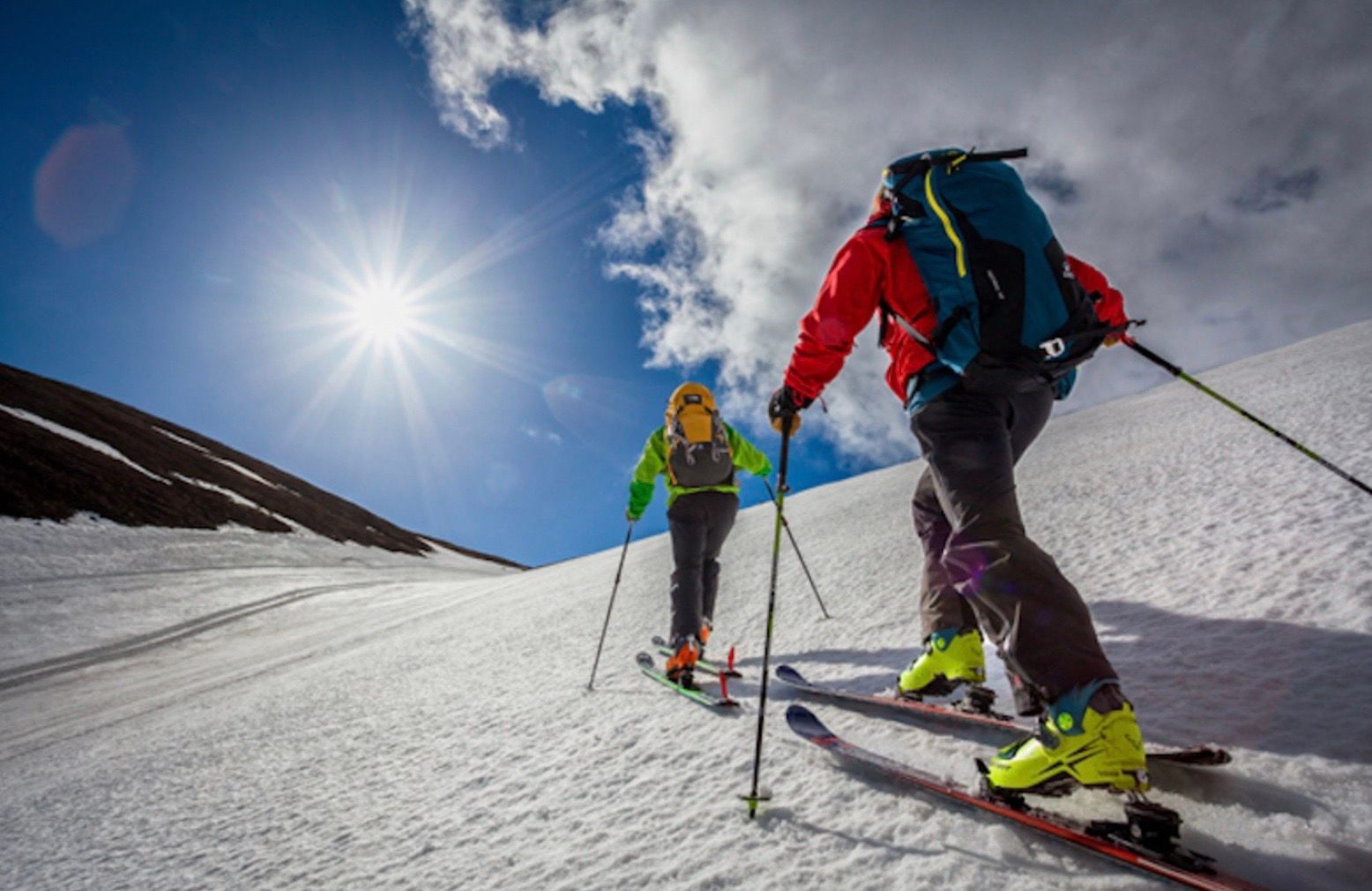Adventures in the Arctic
A year-round guide to visiting Finland.
Finland is a country that lives by its seasons. Winter in Finland is a magical time when the land is transformed into an ice- and snow-encrusted paradise. You can embrace the thrill of skiing through frosty forests, witness the beguiling dance of the Northern Lights, or experience the unique excitement of ice fishing on frozen lakes. As spring awakens, Finland unveils a symphony of colours that has inspired writers, artists and composers for centuries. You can witness the spectacle of the cherry blossoms in Helsinki's parks or explore the north’s pristine wilderness, as nature slowly emerges from its wintry slumber.
As summer arrives, Finland basks in the glow of the midnight sun, offering endless daylight hours to explore its picturesque landscapes. Off the mainland, an archipelago composed of thousands of islands beckon you to embark on sailing adventures or rejuvenate your body and soul in traditional Finnish saunas. And in the Fall, on the other hand, the turning leaves paint Finland in vibrant shades of gold and crimson. Its national parks are adorned in autumn foliage, and you can go foraging for wild berries and mushrooms, or immerse yourself in local traditions during harvest festivals.
In this guide, I’m going to take you through each season's unique highlights, from visiting Santa Claus in Rovaniemi during winter to hiking through the pristine wilderness of Lapland in summer. I’ll help you discover Finland's rich cultural heritage, indulge in Finnish cuisine, and embrace the warmth of Finnish hospitality.
So if you’re thinking about a Finland vacation or planning a full-on Arctic adventure, get ready to embark on an unforgettable journey as I unveil the secrets and wonders of Finland, season by season.
Finland in January: Mid-winter in the Arctic.
Finland in January is cold! With the northern parts of the country lying inside the Arctic Circle, a trip to Finland during its long winter is always going to be an adventure. If you love winter sports, you’ll find plenty of things to do in Finland in January. Think dog-sledding expeditions, steamy saunas in traditional log cabins, indulgent comfort-food in cosy cafés, and cold-water dips in the Arctic Ocean or in Lapland lakes.
The Finland Weather in January
Finland’s weather varies depending on where you are. Winter in the north of the country is extremely challenging with very short days, large amounts of snow and very cold temperatures. In Lapland, the temperature regularly falls to -12℃ at night although there is very little rain as most precipitation falls as snow. There’s an 81% chance of snow on any given day in January in Lapland.
Helsinki, on the other hand, benefits from the city’s proximity to the (relatively) warmer waters of the Gulf Stream. Nevertheless, the city’s daily temperature average from -1℃ down to -6℃. By the end of January it’s even colder with a daily “high” of -2℃. But, of course, the resourceful Finns know how to keep things moving so that even during the worst winter weather, Helsinki travel options — public and private — still function efficiently and safely.
Why Visit Finland in January?
Finland’s busiest month for tourism is December, so in January you’ll be able to find cheaper accommodation and tour deals. Finnish infrastructure is geared to function during the cold winter weather so getting around won’t be a problem, although some tourist facilities do close for the winter.
The Northern Lights in Finland:
January is the best month to view the Aurora Borealis. The sun sets at around 2PM in Lapland, and doesn’t rise until 10AM. These long nights and clear skies make viewing this eerie natural phenomena easy. The town of Saariselkä, close to the Russian border in eastern Lapland is a popular base for viewing the Northern Lights.
Sleep in an Igloo or Ice Hotel: The hospitable Finnish people know how to make visitors feel warm and welcome. Their ice hotels are built by hand every winter to provide guests with the unique experience of sleeping on a bed of furs in a room carved into solid ice. You can also sleep in a glass igloo where you’ll have a perfect view of the stars in the January sky.
Winter in Helsinki: If you travel to Helsinki, Finland’s capital city, in January you’ll find a city of bright lights and frozen waterways. When it’s cold outside, Helsinki has plenty of indoor attractions to keep you warm.
The fortress island of Suomenlinna has several intriguing museums, while the city centre features around 80 museums and galleries. These include the Museum of Contemporary Art and the quirky Amos Rex art museum. Saunas are a Finnish invention (there’s one for every person in the country) and Helsinki is a great place to soak for a few steamy hours in a tub bake in a steam room. Indeed, having a sauna in Finland is pretty much the equivalent of taking a shower elsewhere…it’s something you just do every day!
Ski Your Heart Out in Lapland:
The town of Äkäslompolo is the base for skiing adventures in the Yllästuntui ski resort. In January, the resort is in full swing and you’ll find 330 kilometres of cross-country skiing trails and 61 alpine ski slopes accessed by 29 lifts.
Where to Go and What to Do
January in Finland is a time to build your travels around ice- and snow-related experiences mixed with plenty of indoor escapades. The Finnish language has 40 different words for snow so, as you can imagine, Finnish culture revolves around the white stuff! Many of Finland’s lakeside and coastal summer resorts become winter playgrounds and you can rent a cottage as a base for dog-sledding, ice-fishing and ice-skating adventures.
If you travel to Kuusamo, up in Lapland, the nearby Ruka Ski Resort, is one of the largest in Finland. The Kuusamo region has thousands of small lakes perfect for ice-skating and you can explore the snow-clad forests from the comfort of a reindeer-drawn sleigh. The Holy Cross church in Kuusamo contains a pair of ancient bells saved during WW2 by the actions of some German soldiers and the city’s Kaamos Gallery houses a collection of superb Finnish artworks.
Further north, the Lappish city of Rovaniemi — the traditional home of Santa Claus — sits on the edge of the Arctic Circle. Numerous tour operators offer guided Aurora-viewing trips from the city. Alternatively, if you have your own transport you can easily get away from the lights of downtown and out into the dark wilderness beyond. Rebuilt after WW2, Rovaneimi is laid out in the shape of a reindeer’s head and you can visit nearby reindeer farms to learn about this animal’s intimate connection with Lapland’s culture.
What to bring
Plenty of layers are the key to keeping warm during your adventures around Finland in January. Woollen garments next to the skin (merino is best) will keep you warm even if you’ve been sweating, and additional layers can be added or removed as needed. You’ll need a thick down jacket over your layers and a warm hat to protect your head: preferably woollen. The Finns wear casual, functional clothes in winter so you don’t need to bring lots of fashionable clothes.
If you intend going out on extended Northern Lights viewing trips, make sure you bring plenty of extra warm clothes for the long waits for the Aurora to begin shining. Proper winter boots and gloves are vital to protect your extremities.
Its a good idea to bring an insulated (and waterproof) bag for your camera and electronics to protect the batteries from the cold.
The Finnish people embrace the cold January weather with joy and exuberance. A visit to Finland in January will let you experience their distinctive culture — especially Finnish food and the country’s unique natural environment — in a way that is entirely different from the summer months.
Finland in April: The Colour of Spring
The Finland Weather in April.
The weather you experience in Finland during April will be determined by where you are in the country. If you are visiting Helsinki in April you’ll find that the average temperature rarely falls below 0℃ and rainfall is at it’s yearly lowest. Expect a daily high of around 7℃ and lots of sunshine, as Helsinki has 151 hours of daylight in April. As you move north, however, things rapidly get chilly. In the Central Finland city of Kajaani, expect a high of 5.5℃ and a low of -4℃ with an average of 14 rainy days.
If you travel to Rovaniemi, in Finnish Lapland, winter weather still predominates with temperatures ranging from -3.6℃— 4℃. However, the Lappish weather is much sunnier in spring, with 203 hours of sunshine and only seven rainy days during April.
Why Visit Finland in April?
There are plenty of things to do in Finland at this time of the year. The longer days of April bring the Finnish people out to enjoy open air events and celebrations after the long, dark hibernation of winter.
Ski, Snowboard and Sled:
While the warmer weather thaws the snows around Finland’s capital and the southern parts of the country, winter is still in full swing further north. If you travel to the town of Äkäslompolo, in Lapland, you can find skiing adventures in the nearby Yllästuntui ski resort. In April, the resort still has plenty of snow and very few people on its 330 kilometres of cross-country skiing trails. The longer days make this a great time to go dog-sledding through the snow-encrusted forests, or ice-skate on deserted lakes deep in the Lappish wilderness.
The Season of Willows: Easter is celebrated in Finland in April with a mixture of traditions and flavours. Willow twigs representing the arrival of spring are placed in vases in people’s windows, and bonfires are lit to celebrate the end of winter. Across the country, people feast on roast lamb and the traditional Finnish sweet dessert called Pasha. Expect to be invited into the locals’ homes and made welcome in bars and restaurants wherever you go.
Winter’s End in the Arctic: Located on the edge of the Arctic Circle, Basecamp Oulanka is an eco resort based around sustainable practices and environmentally-friendly activities. You could combine a stay at Basecamp Oulanka with a visit to Kajaani, one of Finland’s northernmost cities. In April, the wilderness areas around nearby Lake Laakajärvi see the arrival of Great black-backed gulls and ospreys to begin their spring nesting.
Springtime in Finland’s Capital: Visiting Helsinki in April will let you experience the Finnish capital as it comes back to life after winter. Street markets appear in the sunny afternoons and you can wander the stalls along Esplanade Park and its adjacent docks where you’ll find handcrafts from Lapland, baked goodies and traditional Finnish snacks such as salmon soup and reindeer stew.
Where to Go and What to Do
With northern Finland still locked in its winter snows, you can easily combine spring warmth and colour with some cool winter adventures. In Helsinki, the quiet streets of the city’s island suburbs of Vuorisaari, Mustikkamaa and Suomenlinna erupt with April blooms of tulips and blossom. Around one third of Helsinki is parkland so you’ll have no trouble finding a green space to explore on fine April afternoons. The city’s biggest park is Alppipuisto Park, north of the city centre which has a hilltop lookout with fine views of the city.
If you include a visit to Turku in your Finland itinerary, you will find the country’s oldest city in the full bloom of spring in April. Warmed by the Gulf Stream, this part of southern Finland is the first region to experience spring and the city has a large selection of museums dedicated to Finland’s natural and maritime history. Especially good is the Forum Marinum Centre and the open-air Luostarinmäen Käsityöläismuseo. Turku Castle is the oldest building in Finland. It is also the country’s most visited museum but in April you’ll have the place to yourself!
If you fancy a flutter on the reindeer, head up to the town of Kautokeino in the far north of Finland. The Reindeer Racing Championships are held there in early April each year and feature hilarious, full-speed gallops along snowy tracks with the reindeer dragging their hapless handlers behind them!
What to bring
For the warmer April weather in southern Finland, layers of light clothing are the best. You’ll also need a warm jacket (preferably a down puffer jacket of some kind) and sturdy shoes or boots to keep your feet comfortable during your adventures. If you are venturing up to the north of Finland in April you’ll still need to pack for winter conditions. Don’t forget a pair of high quality sunglasses and a tube of sunblock as the spring sun is much stronger and you can burn easily. Later in April, the warm weather brings out the bugs so you may want to include some repellent in your kit.
With longer days, warmer weather and few tourists, you’ll find plenty of things to do in Finland in April. With cheap flights available to Helsinki, and great accommodation deals available, you’ll be able to travel further and see more of this fascinating Scandinavian country.
Visiting Finland in April will allow you to experience both the colour of spring in the south and the late winter adventures of the north. And best of all, the hospitable Finnish people will make you welcome wherever you go.
Finland in July: Summertime in the Arctic.
July is summertime in Finland, and most Finns depart the cities to holiday beside the country’s many lakes and extensive coastline. If you visit Finland during this sunny month, you will find considerable crowds at most attractions. The prices for accommodation, especially in the countryside, are also higher. But with a bit of forwarding planning, you can still find travel bargains that will help you to eke out your budget and experience the seemingly endless days of the Finnish summer.
Finland Weather in July
Finnish summers bring a balmy high of around 21℃ during the day, dropping to 14℃ at night. Heatwaves occasionally push the temperatures into the low thirties across southern Finland, with high sunlight hours and very little rain. If you go to Rovaniemi, the capital of Lapland in Northern Finland, you’ll experience warm days and cool nights, with an average temperature range of 11.5℃—19.8℃.
Very little rain falls in this part of Finland in July, and it is daylight (or close to it) for almost twenty hours each day. Further north, inside the Arctic Circle, it can get quite windy but the temperatures remain pleasant. In Kaamanen, for example, expect a high of 18℃ and a low of 9℃ with 9 rainy days during the month.
Why Visit Finland in July?
A visit to Finland in July will allow you to experience the short Scandinavian summer in all its colour and vitality. The fine weather and long days mean that you have lots more time to explore and to join the exuberant Finns on their holiday shenanigans.
High summer in the Arctic:
Basecamp Oulanka, an eco-resort overlooking Lake Juuma in Lapland is a great summer base for wilderness adventures. The nearby Oulanka National park is a naturalists’ paradise. In July, the local birdlife and wildlife are their most active. Further north, inside the Arctic Circle, the daylight lasts for 24 hours so if you’ve ever wanted to experience the Midnight Sun, this is the place to go.
Island life:
With over 80,000 islands, Finland has the world’s largest archipelago. In July, many of the holiday homes and cottages across the region are booked solid but with some forward planning (and a bit of luck) you should be able to secure one. Kaunissaari — “the beautiful island” — has long sweeps of sandy beaches and traditional fishing villages. It can be accessed via a short ferry ride from Kotka, east of Helsinki. Closer to the city, the fortress island of Suomenlinna is great place to explore old ramparts and cobbled paths in the light of the Midnight Sun.
Party in Helsinki: Celebrate inclusiveness at the Helsinki Pride Festival, held early in July, which features parades, street parties and all-night raves. The warm Helsinki nights are perfect for people-watching in open-air bars or strolling along the city’s waterfront in the half-light of midnight.
Explore the outdoors: Hit the outdoors on one of Finland’s many wilderness trails such as the 250 kilometre Archipelago Trail through the Turku Archipelago. With 41 National parks, hiking, canoeing, kayaking and cycling are popular things to do in Finland in July. If you visit Lapland at this time of the year, you can hunt for the salmon-coloured cloudberries which appear for a short time in July. You could combine a trip to the town of Ranua (the cloudberry capital) with a visit to Kuusamo in the heart of Finland’s Lakeland region.
Where to Go and What to Do
With a large proportion of Finland's population on holiday, things can get quite crowded and busy in July. However, the cities are less hectic at this time of year, so July is a good month to explore some of Finland’s charming urban spaces. You’ll find the museums and galleries in cities such as Tampere (the self-styled “Sauna Capital of the World”) and Helsinki much quieter. July is a good time to visit Turku: often described as “The Paris of Finland” because of its thriving restaurant and café culture.
Music fans can attend the annual Ilosaarirock Festival in Joensuu. There are lots of smaller music festivals in July, including the 5-day Kaustinen Folk Music Festival, the Tangomarkkinat dance festival in Seinäjoki, and the Pori Jazz Festival.
Even though tourist crowds make some of Finland’s locations less desirable, by selecting your destinations carefully and making your bookings early, you’ll still be able to enjoy Finland in July. With long days and short nights, you’ll have plenty of extra time for exploring, giving you extra value for your travel budget in the land of the Midnight Sun.
Finland in August: An Autumn Fair
Finland Weather in August
The warm temperatures of late summer still hold sway in southern Finland. If you are visiting Helsinki, expect the temperature to hover between 13℃ —20℃. However, the city’s proximity to the Gulf of Finland encourages rain: around 80mm during August. As you move north, it grows colder, with noticeably shorter days.
In the central Finland city of Kajaani, August sees a daily high of around 18℃ and drops to 9℃ at night. Further north, the city of Rovaniemi, in Lapland, experiences an average daily high of 16℃ dropping to a low of 8℃ at night, with an average of 10 rainy days in August.
Why Visit Finland in August?
The Finns celebrate the end of summer and prepare for the coming winter months with autumn festivals and outdoor events all through August. This is also a great month to escape into the country’s wilderness before the winter weather arrives.
Wander around Helsinki: Finland’s capital city sits on a peninsula jutting into the Gulf of Finland. Warmed by the Gulf Stream, Helsinki in August is perfect for exploring on foot. Its long central avenue, Mannerheimintle, features museums such as the National Museum, street art such as the Three Blacksmiths in Kolmen Square, and several green spaces, including Hesperia Park which is a riot of autumn colour in August. You’ll also encounter street musicians and dozens of cafés along Mannerheimintie.
Explore Finland’s Lakeland: Central Finland is home to lakes ranging from vast inland waterways such as Lake Saaima (Europe’s fourth largest lake) to tiny mirror-calm pools hemmed by thick forests of conifers, birch, and alder. In August, wildlife abounds in this leafy wonderland. You can rent a lakehouse (with a sauna, of course) to use as a base for hiking, paddle-boarding, fishing, and bird-watching adventures during the fall season.
Autumn in the Arctic:
Basecamp Oulanka, near the city of Kuusamo, is an eco-resort that combines outdoor (and indoor) adventures with sustainable practices and environmentally-friendly activities. In August, the resort offers epic white-water rafting packages that will take you down wild rivers deep inside the Arctic Circle.
Take a Ferry to the Islands: The Helsinki Archipelago consists of 330 islands, most of which can be accessed from the city via short ferry rides or even, in some cases, footpaths and bridges. In August, the coastal scenery, lush forests, and sandy beaches are warm and sunny, and most of the islands feature at least one café, pub, or restaurant.
Where to Go and What to Do
With tourist numbers at their lowest, August is a great time to explore some of Finland’s historic cities. If you visit Turku in southwestern Finland, for example, you’ll find autumn colour embellishing the city and local markets full of harvest produce.
Autumn in Finland is celebrated with bonfires to mark the advent of winter. The Finns traditionally lit bonfires on the beaches during the last weekend of August to guide seafarers home. Visitors will also be welcomed to join these festivities. In Helsinki, the annual SAMPO puppet festival kicks off in late August along with the Helsinki Festival of Arts.
If you venture into the north of Finland in August, be prepared for shorter days and colder weather. In Lapland, August is the beginning of the Ruska season. The trees begin to turn, and the wildlife is at their most active. Bird-watching is a popular activity up here in August as the native species begin their migrations south for the winter.
The Aurora Borealis (Northern Lights) are also beginning to light up the night skies. The further north you go, there is a greater the chance of the Northern Light sightings. Hikers wishing to experience an extended adventure in August can walk the 80-kilometre Karhunkierros (Bear’s Ring) Trail, much of which lies within the Oulanka National Park, staying in wilderness huts or at campfire sites.
As winter approaches, visitors can expect to be invited to join in with the many festivals and end-of-summer celebrations going on around the country. If you visit Finland in August, you can combine city explorations and warm-weather activities in the south with early winter adventures in the north. You can also take advantage of the low-season fares and accommodation deals to make your holiday budget go much further.
Finland in September: The Velvet Season.
Autumn in Scandinavia greets visitors with the full blast of rustic colours and autumn foliage. With all the Finns heading back to work, tours and accommodation are cheaper, allowing visitors to explore more of Finland without causing too much of a dent in their pockets. Though some attractions are preparing to close for the winter, there are still plenty of things to do in Finland in September.
Finland Weather in September
As the days draw in, the temperatures begin to plummet. While the south of the country still experiences mild weather, the north of Finland is already having frosts and occasional snow storms. If you visit Rovaniemi, the capital of Lapland, you will find daily high of around 10℃, dropping to 4℃ at night. Further north, the temperature in Kaamanen rarely gets into double digits in September, averaging from a high of 9℃ to a low of 2℃.
The south of the country still has balmy conditions. In the Finnish capital of Helsinki, expect a daily high of around 15℃ with a coolish low of 9℃ at night and approximately 14 rainy days across the month.
Why Visit Finland in September?
From spectacular coastal drives to lazy island chill-outs, all backdropped by the vivid colours of autumn, September is one of the best months to Visit Finland.
The Colour and the Shape:
Photographers in search of autumn splendour can head north to Lapland where the vast forests near the Arctic Circle are ablaze with colour. The Finnish people call this time of year
ruska-aika
(autumn foliage season) and the peak season for autumn colour is usually the second week of September.
Autumn in Karelia:
The south-eastern province of Karelia comes alive in autumn months, offering plenty of outdoor exploration opportunities. In Lappeenranta, visitor flock to embarking on hikes along the shores of Lake Saimaa or the Gulf of Finland. The region is also world-renown for the trout-fishing in its many quiet rivers. Wildlife abounds in this part of Finland, and September is the best month for spotting animals and birds as they busily prepare for the rigours of the approaching winter.
Festivals: The Finnish people love a good festival and September has some of the country’s best annual get-togethers. Pride of place is the Loviisa Sibelius Festival held in the small coastal town of Loviisa and which celebrates the music of Finland’s greatest composer, Jean Sibelius. Also worth checking out is the Helsinki International Film Festival, which brings world-class celluloid delights to the city over a two-week period in late September, the SAMPO puppet festival, and the annual multi-arts Helsinki Festival.
Where to Go and What to Do
Finland’s urban centres take on a vibrant new life in September, as returning holidaymakers fill up the bars and cafes and the nightlife kicks back into action as the days draw in. In Helsinki, the September colours make a pleasant backdrop to strolls around the city’s many parks and you can visit some of the city’s many galleries and museums — such as the National Museum of Finland and the stylish Helsinki Art Museum — on days when the weather is wet.
If you travel to Turku in September, you can experience the city’s famous open air cafés and restaurants surrounded by the spectacular autumn colour of the city’s many parks and green spaces. Turku has a vibrant nightlife centred around its Market Square and, indeed, the town is so well known for its French food and cosmopolitan atmosphere that the Finns refer to the city as the “Paris of Finland.”
For an epic September road trip, you can drive Finland’s longest highway, from Helsinki in the south to Finland’s northernmost town, Utsjoki: a distance of 1,295 kilometres. Taking in some of Finland’s best autumn scenery, and passing through the central Finland cities of Kajaani and Kuusamo, and on through the heart of Lapland, this roadie will take you all the way to Europe’s northernmost border, deep inside the Arctic Circle.
The waters of the Finland Archipelago, on the other hand, are still warm enough for paddle-boarding, kayaking and sailing. With over 80,000 islands to choose from you’ll easily be able to find a place to hang out for a few days while you enjoy the balmy September afternoons.
Visiting Finland in September will provide you with an opportunity to experience the country’s colourful transition from summer to winter. September is an underrated month for visiting Finland as it falls between the summer holiday season and the winter ski season. This means that you’ll find lots of flight and accommodation bargains and encounter few crowds as you explore the autumnal splendour of Finland in September.
Finland in October: Welcoming in the Winter
Finland Weather in October
The Helsinki weather in October is generally cloudy and cool with more rainy days. Expect an average low of 4.2℃ and a high of around 10℃. In the south of the country, the city of Turku experiences daily highs of 9℃ and a low of 2.8℃. The proximity of both Helsinki and Turku to the Baltic means that foggy weather is common in October.
Finland’s northern areas are already in the grip of winter by October. Lapland’s main city, Rovaniemi, has a daily average high of 3℃ dropping to -1℃ at night. Further north, you enter the Arctic Circle where the temperatures in October are below zero all day.
Why Visit Finland in October?
The Finnish people are extremely hospitable and as the October weather gets colder, visitors will be welcomed into warm bars and cosy restaurants as the nights draw in and evenings arrive earlier.
The Northern Lights:
October is a perfect time to venture north into Lapland to see the Aurora Borealis (Northern Lights). The long nights and clear skies make viewing this eerie natural phenomena easy and the lack of tourists at this time of year means that accommodation and tours are much cheaper and less crowded.
Autumn in Karelia:
The landscapes of Karelia province, in south-eastern Finland, have inspired artists and musicians for centuries, including the Finnish composer Jean Sibelius’ masterpiece: the
Karelia Suite. In October, the forests along the coast of the White Sea are still resplendent with their autumn colours and there are plenty of hiking, fishing and horse-trekking options to enjoy.
Indoor Helsinki: If you travel to Helsinki, Finland’s capital city, in October you’ll find plenty of indoor attractions for wet days. Completed in 1852, the neoclassical Helsinki Cathedral is the city’s dominant landmark, while the ornate Eastern Orthodox-style Uspenskin Cathedral is packed with sculptures and paintings. The city has a number of excellent museums including the Luonnontieteellinen Natural History Museum and the National Museum of Finland.
Basecamp Oulanka: Perched right on the edge of the Arctic wilderness This eco-retreat in the north of Finland offers outdoor adventures based around sustainable practices. In October the boreal forests have their first winter coating of snow and the from the resort’s traditional log cabins you can set off on show-shoeing expeditions during the day and snuggle up beside a roaring fire with a bowl of reindeer stew in the evenings.
Where to Go and What to Do
Kajaani, in central Finland, is a pristine wilderness of conifer forests. In October, the lake known as LaaJajarvi is prime habitat for ospreys and attracts birdwatchers from all over the world. The nature preserves near Kuhmo are home to large populations of wolves, bears and forest reindeer. The arrival of the cold October weather makes these animals more mobile and easier to spot.
In Helsinki, the annual Baltic Herring Market is held in the first week of October. This traditional event, which celebrates the end of the summer fishing season, has been held since 1743. Try the pungent fermented herring dish known as Surströmming…if you dare!
Rovaniemi is the capital of Lapland and is the traditional home of Father Christmas. By October, the first winter snows have fallen and the shorter days mean that you can see the Northern Lights without having to brave the really sub zero temperatures Finland experiences later on in the winter. The first winter snows also mean that ski resorts such as the Ruka Ski Centre at Kuusamo are open and uncrowded.
What to bring
The winter of October means that you’ll need to pack plenty of warm clothes that are easy to layer. Merino wool worn next to the skin will keep you warm if you are hiking or exercising and a woollen hat will protect your head from the cold. Fingerless gloves keep your hands warm while preserving your dexterity and a pair of wind/waterproof over-gloves will keep out the rain. A raincoat that extends past your hips is a must and a down jacket, while expensive, will keep you toasty warm during your adventures.
October is the perfect month to visit Finland as you’ll still be able to experience the winter majesty of Scandinavia without the extremes of cold that the country undergoes later in the winter.
As we come to the end of our exploration of Finland's four distinct seasons, I hope this blog post has ignited your wanderlust and inspired you to embark on an adventure in this mesmerising country. From the serene winter wonderland to the vibrant burst of colours in spring, the endless days of summer, and the breathtaking autumn foliage, Finland offers an array of experiences that cater to every traveler's desires.
Whether you're seeking thrilling outdoor activities, cultural immersion, or a tranquil escape into nature, Finland has it all. Embrace the enchantment of winter by witnessing the dancing Northern Lights or revel in the joy of a midnight sun hike during the summer solstice. Indulge in the flavours of Finnish cuisine, immerse yourself in local traditions, and discover the warmth of Finnish hospitality that will make your journey even more memorable.
No matter the season you choose to visit Finland, you'll encounter a land of unspoiled beauty, pristine landscapes, and a harmonious connection between nature and culture. So, pack your bags, embrace the changing seasons, and let Finland enchant you with its timeless charm.
If you're considering a trip to Finland and would like personalised travel advice and itinerary planning, I'm here to help! With my in-depth knowledge of the country and expertise in crafting memorable journeys, I can assist you in creating a tailored experience that suits your interests and preferences. All you have to do is get in touch with me and we can turn your dream trip to Finland into a reality.
I hope this blog has provided you with inspiration and valuable insights into planning your visit to Finland throughout the year. Whether you're a winter enthusiast, a nature lover, or a cultural explorer, Finland promises an unforgettable experience that will leave you with lifelong memories. So, go forth and explore the wonders of Finland, as each season unfolds its own captivating story, waiting to be discovered. Happy travels!
